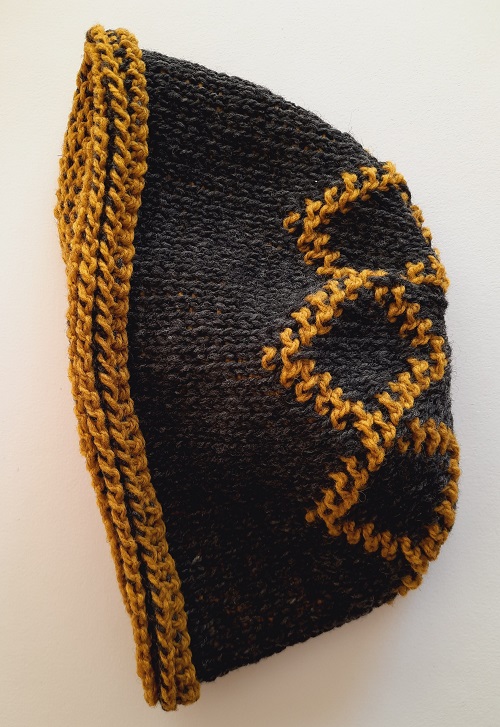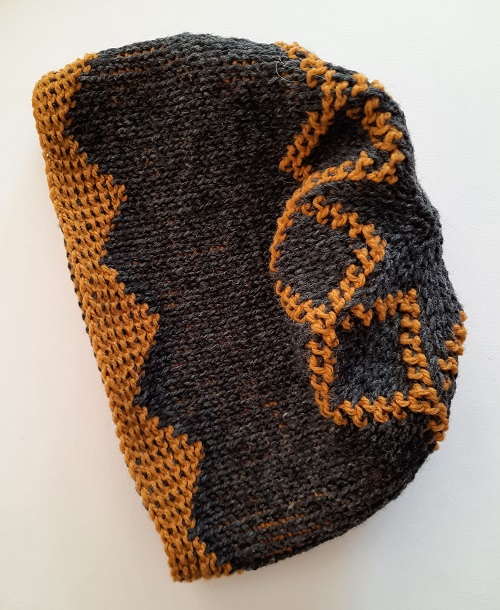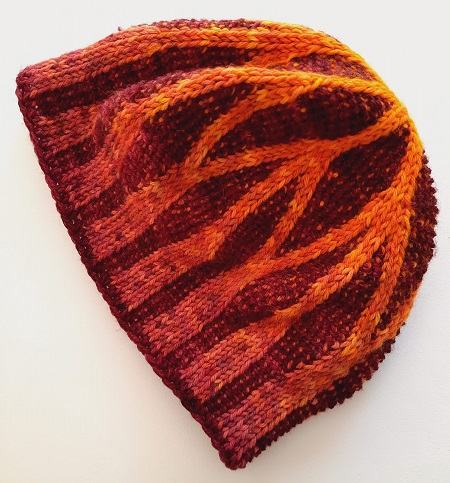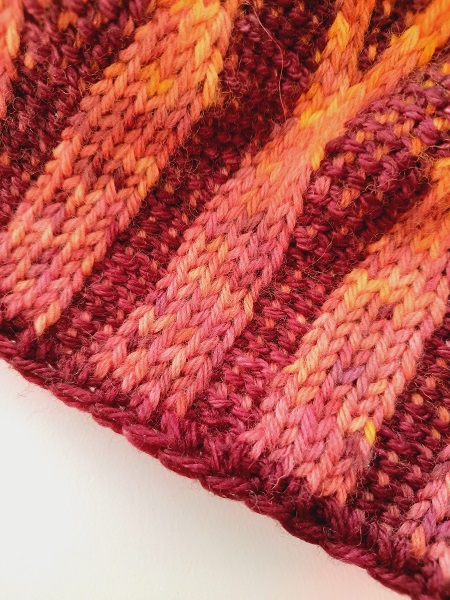Tunisian crochet will always tend to curl. It’s mechanical. Yet there are several techniques to prevent edges from rolling. In this article I share my tips to fight against curling edges when making Tunisian crochet beanies.
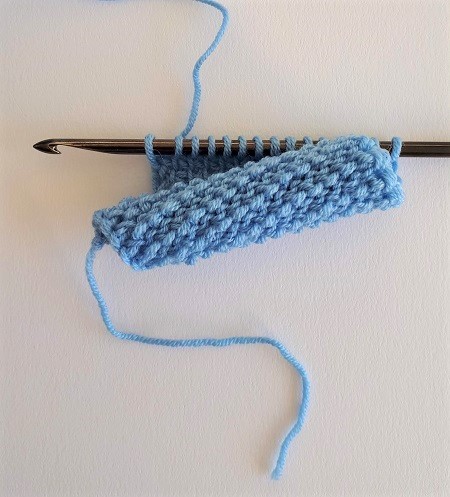
You can make Tunisian crochet beanies in several different ways. So you won’t fight curling the same way in all cases. It all depends on the construction type of your beanie, whether you start it from the top or the bottom.
General tips
I have already posted about tips and tricks to defeat curling in Tunisian crochet. So I won’t say much about hook size and yarn type here. But keep this very important thing in mind: don’t trust what is recommended on the label of yarn balls about needles or hook size. These indications are meant for knitting and “standard” crochet. These yarn crafts don’t have the same technical properties as Tunisian crochet. In general, choose a bigger hook size than what is recommended for the yarn of your choice. You’ll see that your work won’t curl as much.
Top down beanies
Top down beanies start from the top of the crown down to the edge. They are very often made in the round with a double-ended hook. You can start with a magic ring or a short row made of a few stitches that you’ll frown to shape the top of the beanie. In any case, when you reach the bottom of your beanie, if you work in simple or knit stitches, chances are your edge will curl.
Tunisian purl (Tps) or reverse stitches (Trs) or both together (purled Trs) will help counteract the curl. Here below is my beanie Par ailleurs. The edge curls even though I made 1 round in Tunisian reverse stitches.
But curling disappears completely after several round in Trs. For this second beanie Par ailleurs, everything is the same as in the first beanie: same yarn, same hook, same pattern. The only difference is the way I made the final edge with several rounds in Trs.
For both beanies Par ailleurs here above I made no blocking at all. So these edges are what you get while working on your beanie. Blocking helps to fight against curling, but in the case of the second Par ailleurs, it’s not even necessary to block the beanie.
Bind off differently
You don’t have to make purl or reverse stitches only. You can create motifs by alternating different stitches. What matters is to evenly spread the amount of fibres on both sides of your work.
For example, the end of my beanie Arches gothiques is made of Tunisian knit stitches and reverse stitches. The final bind off round is made in half double crochet (US terminology). Then I blocked the beanie. No curling left.
And also think about mixing different yarn crafts! You can end your Tunisian crochet beanie with a knitting edge (rib stitches) or with “standard” crochet stitch patterns (like shell stitches, for example).
Bottom up beanies
If you want to start a beanie from the bottom, the key element will be the cast on technique you choose. Tunisian crochet projects don’t have to start with a foundation row/round made of chains. You can make different types of foundation rows (single crochet, half double, double, etc).
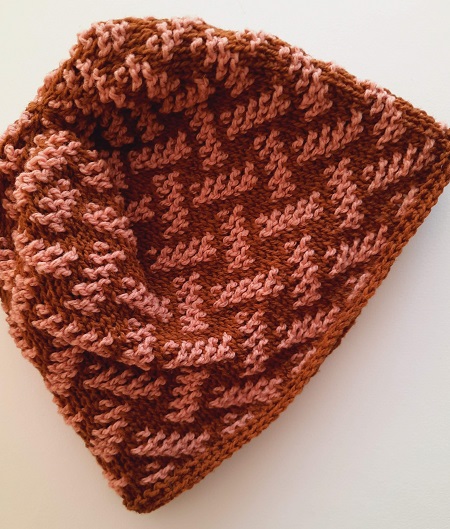
Here above, the photo is taken before blocking. I started this beanie with a foundation row in single crochet. It curls a little. Not that much. But still. After blocking, this disappears completely. Note: I have not written down a pattern for this project.
Stretchy foundationless Tunisian crochet cast on
Special attention to the stretchy foundationless Tunisian crochet cast on technique. I devised this technique to keep loops on the hook right from the beginning. So you don’t make any chain or foundation row in which you’ll pick up loops. It takes more time to add loops on your hook. But you don’t have to pick up loops from chains. So it feels slower to make, but in the end is it really slower? I made a video in English to illustrate this technique. But finish reading this article first.

If you have a close look at the photo above, you’ll see that the edge doesn’t really curl. It sticks up. After blocking, your edge will be flat and even with the rest of your work.
Important tip: Make this stretchy foundationless Tunisian crochet cast on with a smaller hook than you would use for the rest of your work. Switch to a bigger hook when you start the second row/round. It’s counterintuitive because most of the time you’ll be told to use a bigger hook for foundation rows. But here there is no foundation stitches. Use a smaller hook and your loops will not be larger than the rest of your work. This technique is perfect to fight against curling.
One word about sideway beanies
Another construction type for a beanie is to make rows, the length of which matches with the height of the beanie. You can make a basic rectangle, seam opposite sides together, frown the upper side for the crown and leave the lower side open. I prefer to make short rows to better shape the crown.
I would say that this construction type “naturally” defeats curling. You seam together the edges that curl. And you are left with the side edges of Tunisian crochet rows that don’t tend to curl for the bottom edge of your beanie. Now, if you find your first or last loop is not neat enought to be left as it is, simply add a border of your choice. It could be a row/round in single crochet or half double crochet. You choose.

